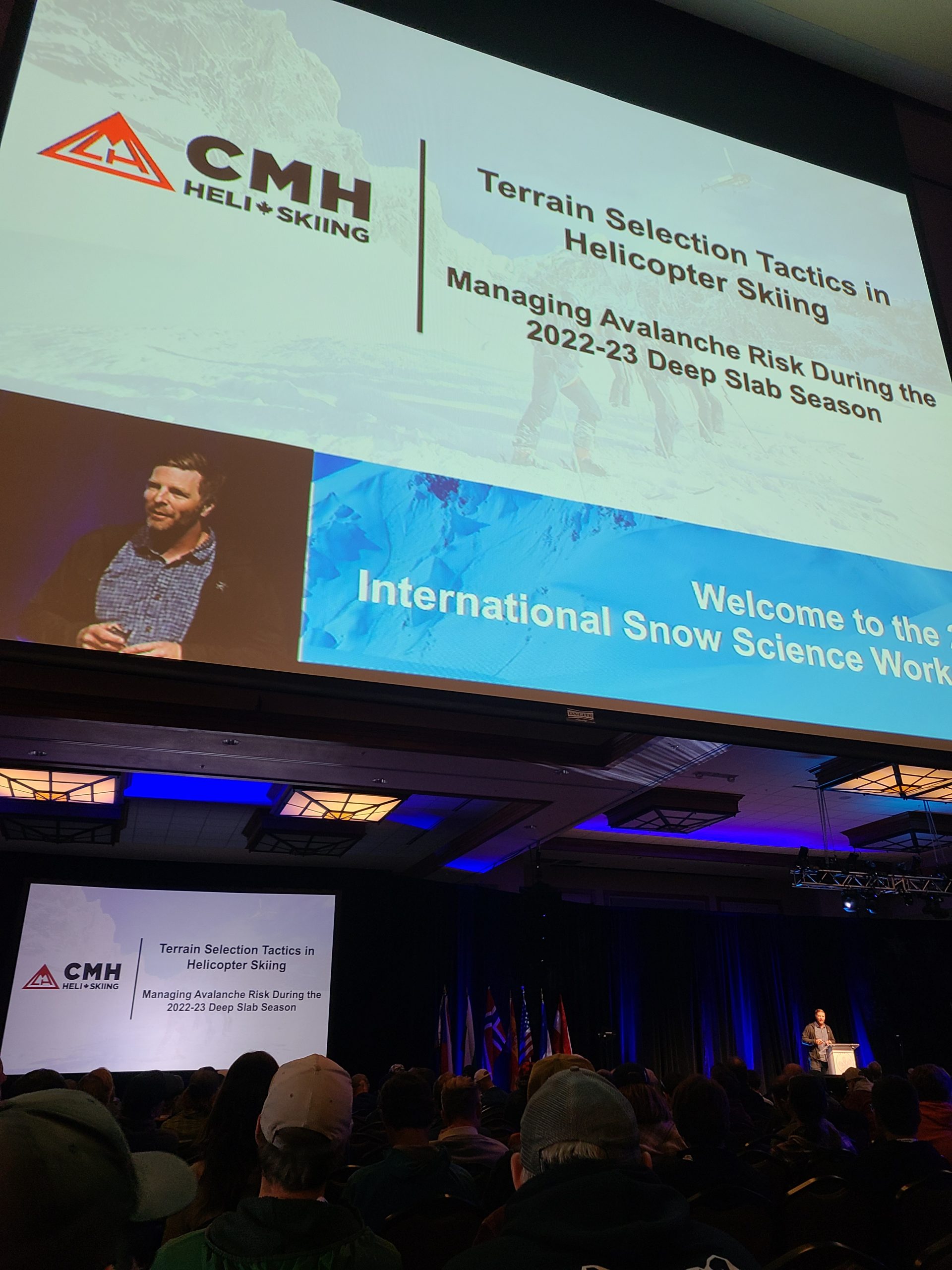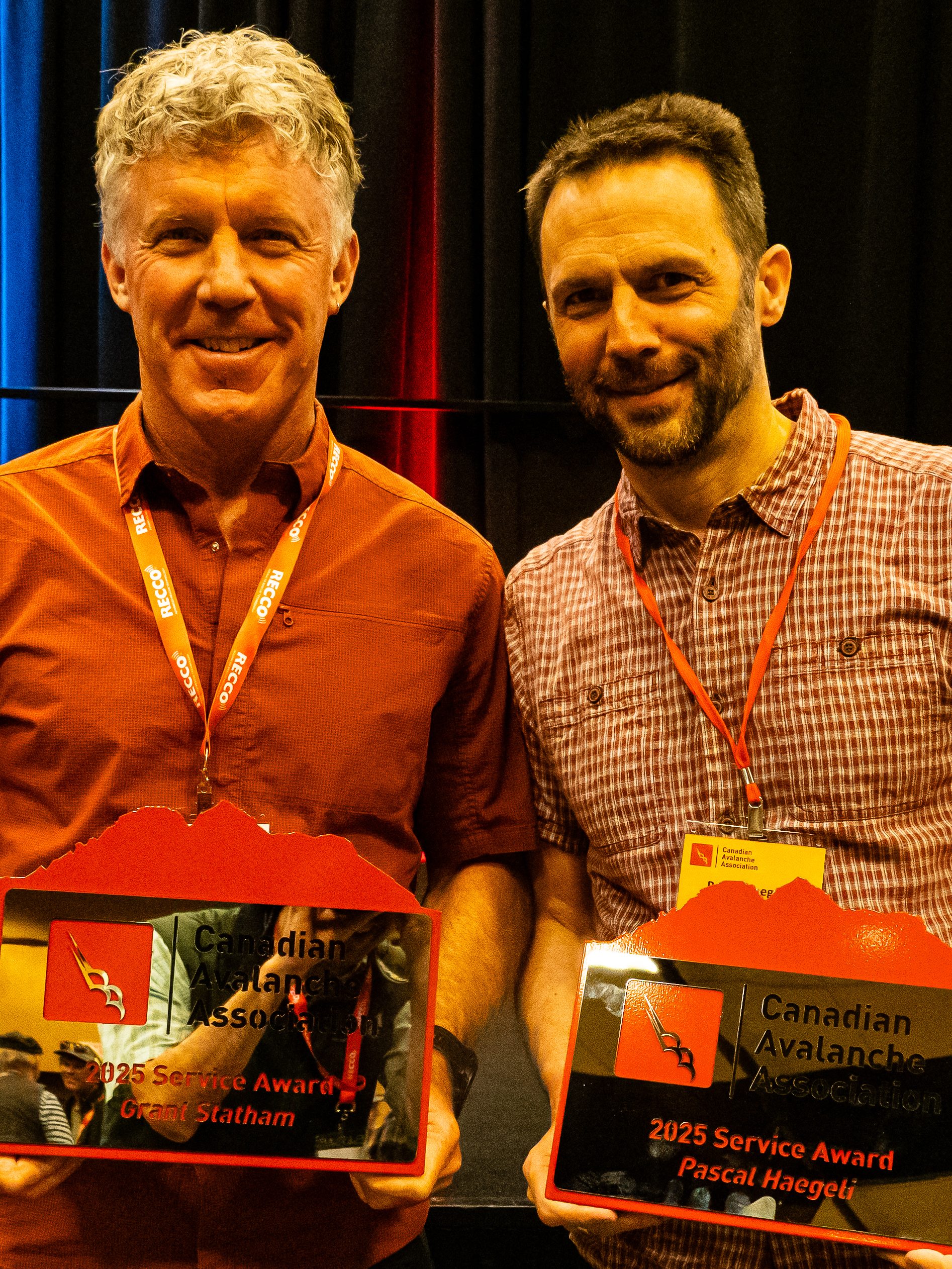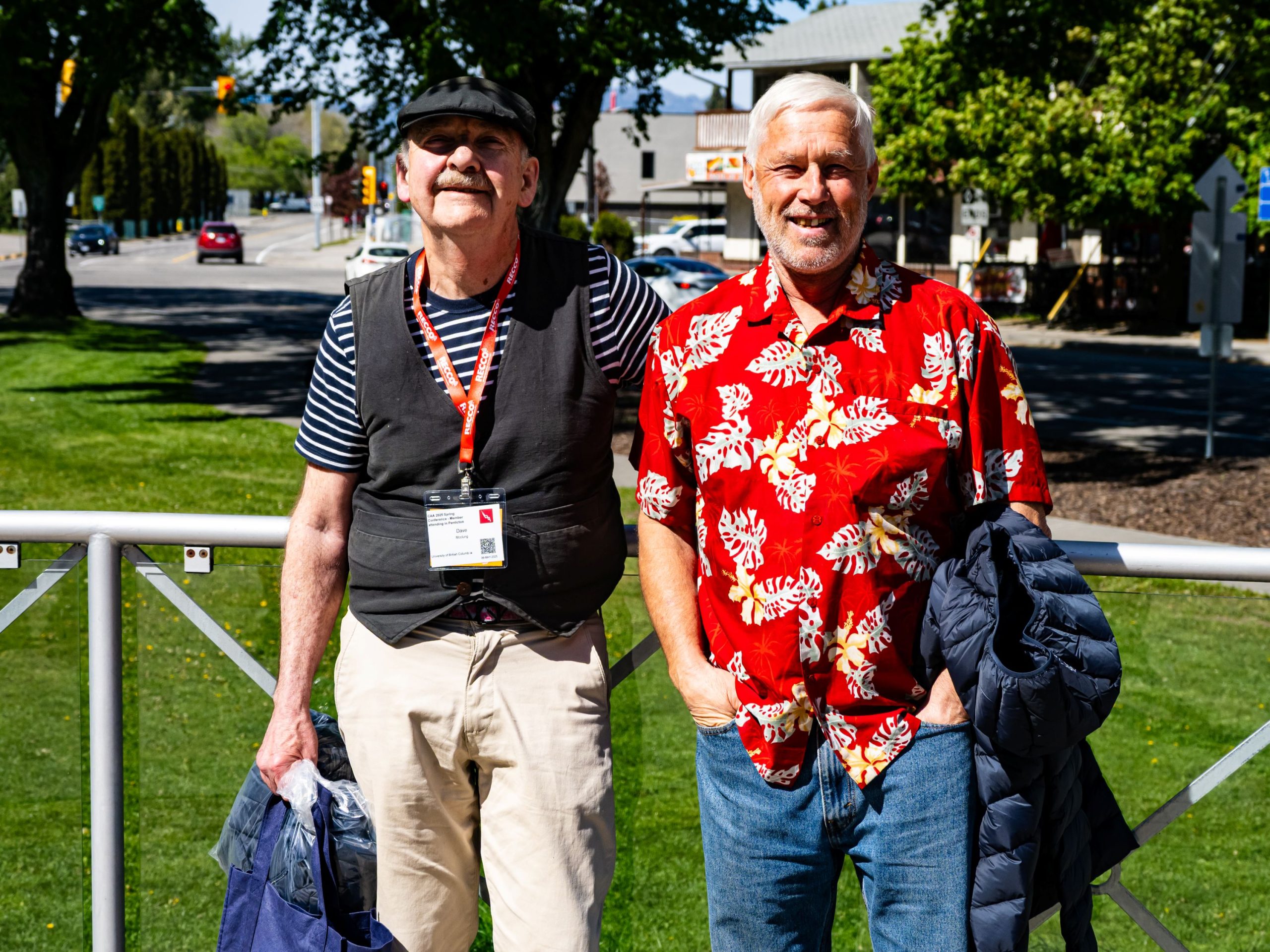Navigating a Future in the Avalanche Industry While Legally Blind
By Tyson Rettie

This article originally appeared in Volume 130 of The Avalanche Journal
Prior to my vision loss, I was working as a ski guide in the mechanized industry. I was first exposed to the concept of guiding on my 18th birthday when my dad took me out with RK Heliski near Invermere, B.C. From there, I was hooked and started my path towards becoming a certified ski guide. I began my career as a tail guide at Big Red Cats when I was 19. Guiding very quickly became much more than just a job—it was a lifestyle.
The Canadian Ski Guide Association best fit my goals within the industry. I first attempted the CSGA Level 3 course at the age of 25. I was initially unsuccessful, but later passed the exam. By this time, I had a full-time job at Great Canadian Heli-skiing and a part-time job guiding snowmobile tours at Toby Creek Adventures. A few seasons prior, I had the privilege of being part of a three-guide team tasked with the opportunity to start a new cat-skiing and heli-skiing operation in China. Around this time, I started to develop a number of health problems—the most significant being vision loss. I guided my final winter blind in one eye and lost the vision in my other one shortly after the season ended.
In the summer of 2019, I was legally blind and was later diagnosed with a rare mitochondrial disease. I have some remaining peripheral vision—enough that I can walk into an unfamiliar room and not bump into furniture, but not enough to know who or how many people are in the room. It was quite obvious I would never be able to ski guide again, but I was determined to continue skiing and find a place for myself within the avalanche industry.

BACK ON SKIS
Returning to skiing was a bittersweet experience. On one hand, it felt good to be back at it and prove to myself that vision loss wouldn’t keep me out of the mountains. On the other hand, it was one of the most frustrating challenges I ever attempted. I was used to being out front and in charge and I struggled to come to terms with the fact I would have to turn over the reigns to someone else. I would be the guided, not the guide, at least at the start.
I also struggled to even ski. I essentially had to learn all over again. I struggled to maintain my balance and lacked the confidence to stick to the fall line. I very clearly remember the first time I skied as though I did not have a visual impairment. It was a short but open and consistent slope in Kootenay Pass. It was a major turning point. I very quickly began to build confidence and speed in open terrain where I had nothing to hit. Later that the season, with the help of some friends, I skied a first blind descent in the Purcells—a 1,700 m run from the summit of Jumbo Mountain to Commander creek.
BRAILLE MOUNTAIN INITIATIVE
My first foray into the industry as a blind person was in adaptive sport. I founded Braille Mountain Initiative, a nonprofit organization focused on providing the opportunity for other blind skiers to participate in backcountry mountain sports. So far, I have run four trips for blind athletes with the help of friends and family.
On our most recent trip, we took a group to Sorcerer Lodge and provided them with one of the first AST 1 courses for the blind and visually impaired. This required modifying the AST curriculum so it could be taught to blind athletes. While doing so, I knew it would be critical to retain the core competencies of the curriculum and only change the way the information was delivered and the expectation of how our participants would use the information. For example, we didn’t use the standard slideshows; instead, we looked for real-world examples participants could put their hands on or feel under their skis. Another change was our expectation of how our participants would identify avalanche terrain. Instead of teaching them what to look for, we taught them what to ask of their partners throughout the day to maintain situational awareness and know when they are in avalanche terrain.
This work has been very rewarding, but it is a passion project and not a paying job. I wanted to get back into the industry in a more full-time way.

PUBLIC AVALANCHE FORECASTING
On November 15, 2021, I started my new career as a public avalanche forecaster with Avalanche Canada. This would be the first time someone with such a significant visual impairment would be in this role. It would be an experiment for everyone involved. I knew going in that a lot of weather forecast resources would not be accessible to me. I use screen reader software on my computer to access the critical data needed to do my job, but this software cannot interpret visualizations—only tables and text. Essentially, the software presents the data that is displayed on the screen in an audio format and I use a variety of shortcut keys to instruct it to read out different elements. This means instead of viewing ensemble meteograms, I listen to weather data in a table format, with time on the Y axis and different weather parameters on the X axis. I listen to point forecasts for several areas within a forecast region to build a mental ensemble and a picture of weather and snowpack over a large area.
This job has required me to forecast for areas of western Canada that I have never been to or seen a map of. I cannot read a map anymore, so I orient myself by looking up the latitude and longitude of a familiar point within the forecast region and build a mental map using the coordinates of various weather stations, forecast points, and important geographical features. This is an ongoing challenge, but my ability to remember large numbers is improving. I can listen to a latitude and longitude and have a rough idea where it is within a region.

FIELD OBSERVATIONS
Field work became the next challenge to conquer. I lack the vision to lead a team in the mountains, but I can still be a functioning member of one. Snow profile work is hands on and doesn’t require a lot of adaptation. I have ditched some of the traditional tools for a talking tape measure. For example, to measure the height of snow, I simply use the talking tape to measure the portion of the probe above the snow surface and subtract from 320. Snow crystal identification is much more challenging. I must go into each pit with good background knowledge of what layers are likely to be found and at what depth. It’s not possible to feel the difference between large facets and surface hoar so I need to have a better understanding of the factors that would result in one layer versus the other developing in a given snowpack.
Of course, field work is so much more than digging profiles. As professionals, we make many ongoing observations throughout the day just by looking around as we travel through the mountains and by feeling the snow under our skis. While my ability to make observations with my remaining vision is quite limited at times, I feel as though my connection with the snowpack through my skis has improved. In early January, me and fellow ski guide Harry Bolger were touring at Pedley Pass in the Rocky Mountains near Invermere, B.C. We were travelling across a ridge feature just above treeline when the snowpack under my skis began to feel slabby and a bit spooky. I started to think about what I could be feeling. Towards the end of December, there was a period of cold and dry weather followed by easterly winds in the area.
I figured the steep, west-facing slope to my left probably had wind slab over facets. Harry was obviously feeling the same thing. Before I could say anything, he commented: “This feels like a great place to start an avalanche.”
We continued skinning along the ridge to the summit for lunch, after which we decided to ski back along our skin track to the trees on the skiers left of the bowl that had been on my left when travelling across the ridge. While skiing over the part of the ridge where I had felt slabby conditions, we both heard a loud whumpf and I felt the snowpack settle. We were in a safe place so neither of us were very concerned. My first thought was, “Oh yeah! Wind slab on facets.” I realized I was wrong when a few seconds later, Harry exclaimed: “Its
still going!”
We actually triggered an avalanche on the December 1 layer that had then stepped down to ground. The average depth of the crown was two metres. Harry later measured the width and length using Gaia—the avalanche was 350 m wide and ran for 1,000 m. While I may not have accurately picked out the weak layer in my head, I certainly wasn’t wrong in feeling unsafe snow under my skis. It was an exciting moment and certainly the largest avalanche either of us have triggered.
Ski guiding will likely remain off the table due to my vision loss, but I will continue to seek new opportunities to apply my skills and develop new ones as an avalanche professional. In my spare time with the help of friends, family, and many industry partners, I hope to push the limits of adaptive sport as the director of Braille Mountain Initiative.







